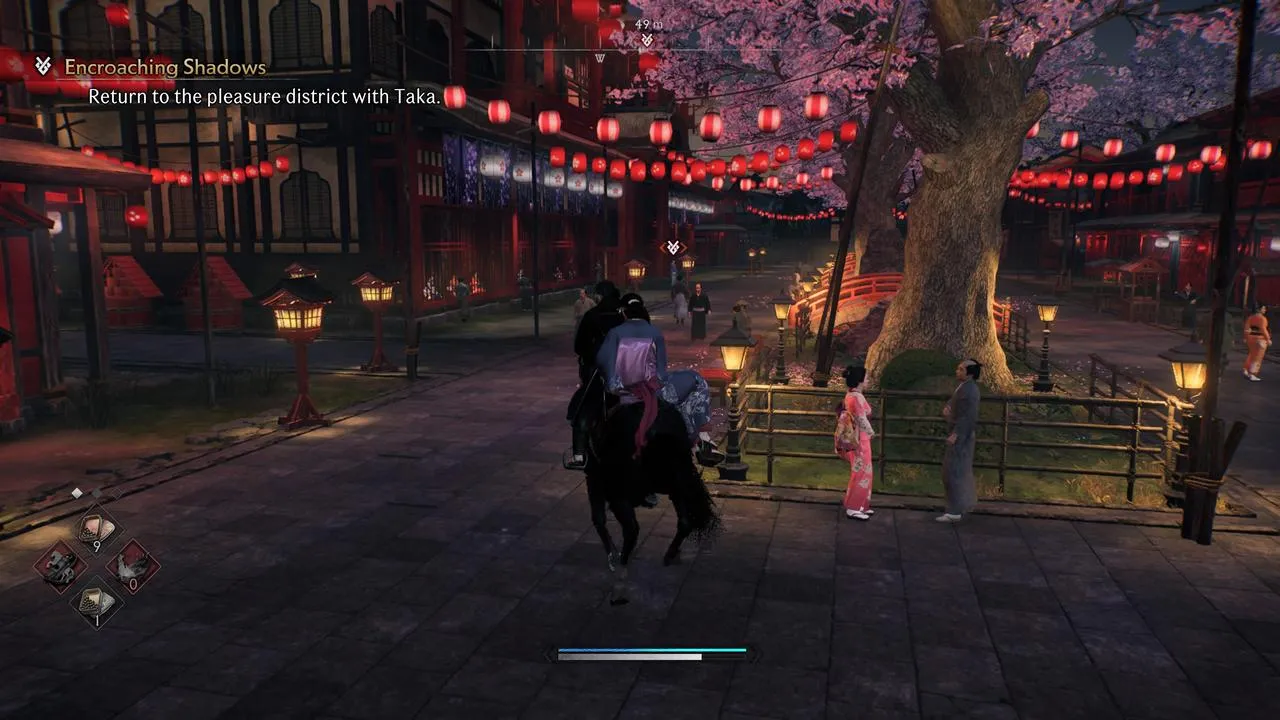
Rise of the Ronin: A Samurai Epic Reforged
The name Team Ninja often evokes the image of Tomonobu Itagaki, the director who revitalized the Ninja Gaiden franchise on the original Xbox. His work challenged the dominance of the PlayStation 2 and introduced a new generation to the fast-paced, brutally challenging world of hack-and-slash action. Ninja Gaiden‘s protagonist, Ryu Hayabusa, became a gaming icon, appearing in other Team Ninja titles like Dead or Alive. However, the gaming landscape shifted dramatically with the arrival of FromSoftware’s Dark Souls in 2011, ushering in the era of “Souls-like” games. Team Ninja responded with titles like Nioh, Stranger of Paradise: Final Fantasy Origin, and Wo Long: Fallen Dynasty, all bearing the Souls-like mark, yet none achieving the widespread acclaim of their predecessors.
Now, Team Ninja presents Rise of the Ronin, an ambitious open-world action RPG set in late Edo-period Japan. Departing from the studio’s usual focus on supernatural elements, Rise of the Ronin emphasizes character development and a historically grounded narrative, coinciding with the release of Capcom’s Dragon Dogma 2, setting the stage for a fascinating clash of titans. Let’s explore what Team Ninja’s latest offering brings to the table.
A Breath of Fresh Air in Feudal Japan
 alt text describing a vibrant scene in Rise of the Ronin, showcasing the game's environment and potentially some characters. Keywords: Edo period Japan, open world, samurai, ronin
alt text describing a vibrant scene in Rise of the Ronin, showcasing the game's environment and potentially some characters. Keywords: Edo period Japan, open world, samurai, ronin
Unlike the war-torn landscapes of Ghost of Tsushima, Rise of the Ronin depicts a more prosperous, albeit turbulent, late Edo period Japan. The game portrays the nation grappling with the forced opening of its ports to Western powers, particularly the arrival of Commodore Matthew Perry’s “Black Ships.” This historical backdrop creates a compelling narrative framework, allowing players to interact with historical figures like Sakamoto Ryōma and Yoshida Shōin, shaping the storyline through their choices and alliances.
One of the game’s most innovative features is its faction system. Unlike many RPGs, Rise of the Ronin doesn’t lock players into a single allegiance. Players can freely switch between supporting the Shogunate and joining rebel factions, leading to dynamic and often unpredictable scenarios.
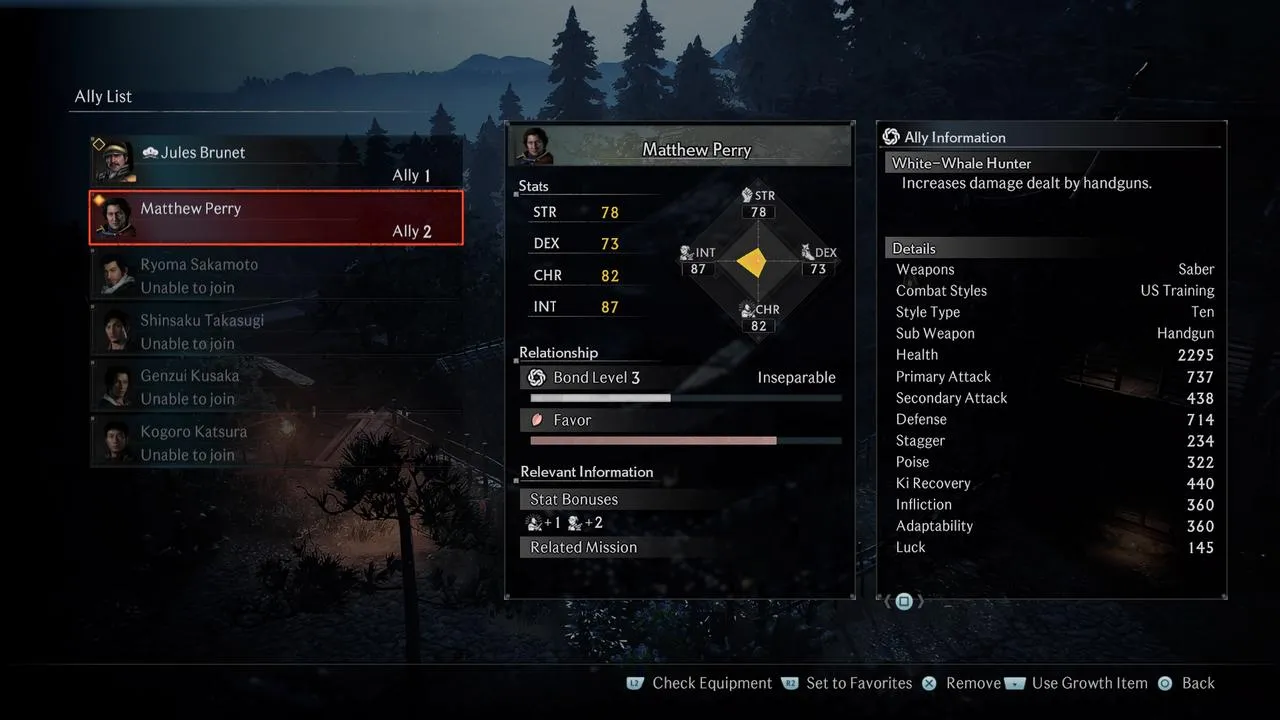 alt text describing an image of character interaction, potentially within the Longhouse or during a mission. Keywords: Companions, NPC interaction, relationships, Rise of the Ronin
alt text describing an image of character interaction, potentially within the Longhouse or during a mission. Keywords: Companions, NPC interaction, relationships, Rise of the Ronin
The game’s “Companions” are central to this dynamic gameplay. These NPCs offer assistance in missions, provide stat boosts, offer gifts, teach new combat techniques, and even offer romantic opportunities. The Longhouse serves as a central hub for interacting with Companions, allowing players to customize its décor and change the Ronin’s attire.
Furthermore, Rise of the Ronin introduces a unique “time-rewind” mechanic, enabling players to revisit past events and alter their outcomes, creating branching timelines and exploring the consequences of different choices.
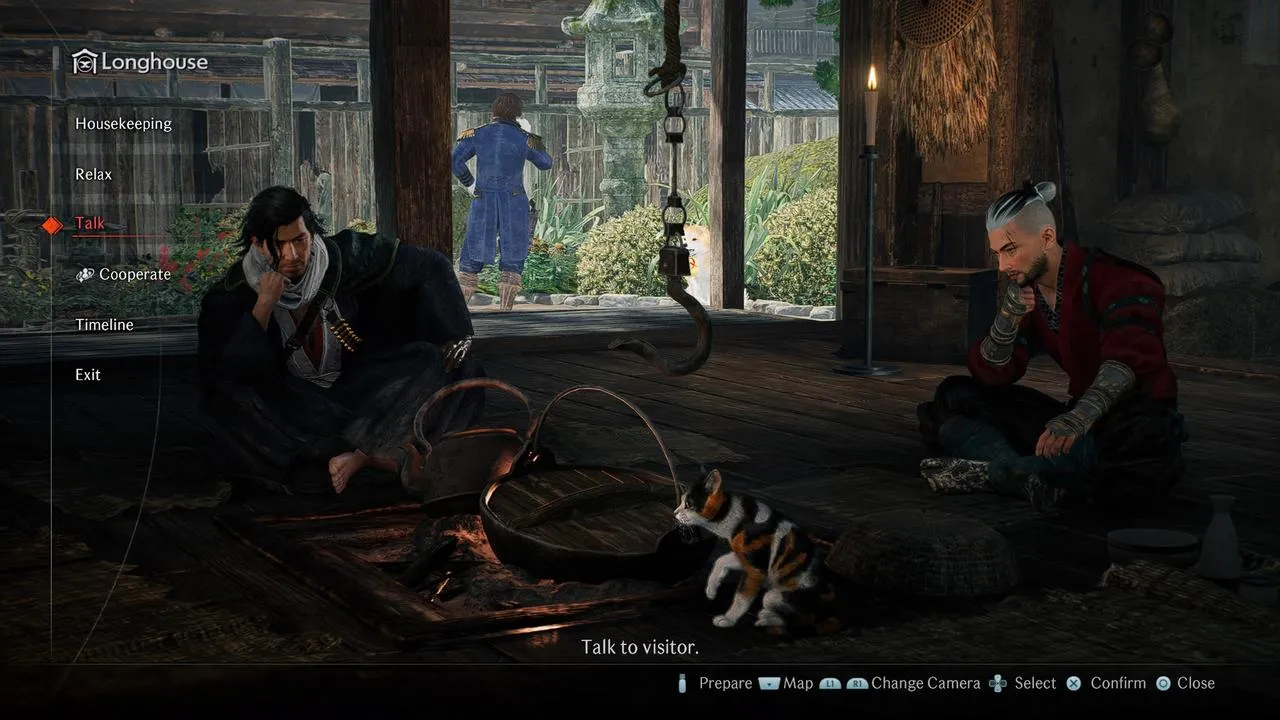 alt text depicting a scene showcasing character customization or the Longhouse interior. Keywords: Customization, Longhouse, interior design, Rise of the Ronin
alt text depicting a scene showcasing character customization or the Longhouse interior. Keywords: Customization, Longhouse, interior design, Rise of the Ronin
The open-world design fosters a sandbox experience, offering various side activities, from hunting and aerial acrobatics to archery contests, photography, and even gambling mini-games.
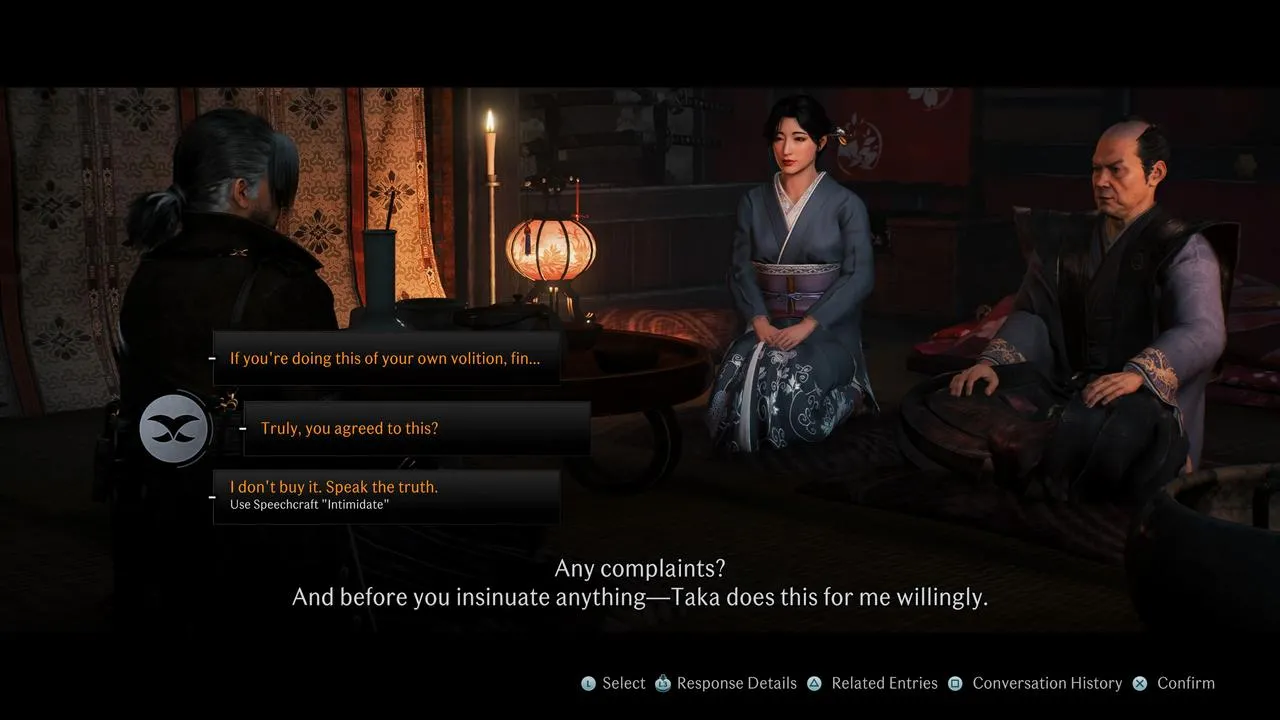 alt text describing an action scene showcasing the grappling hook mechanic. Keywords: Combat, grappling hook, action, Rise of the Ronin
alt text describing an action scene showcasing the grappling hook mechanic. Keywords: Combat, grappling hook, action, Rise of the Ronin
Refined Combat, Familiar Feel
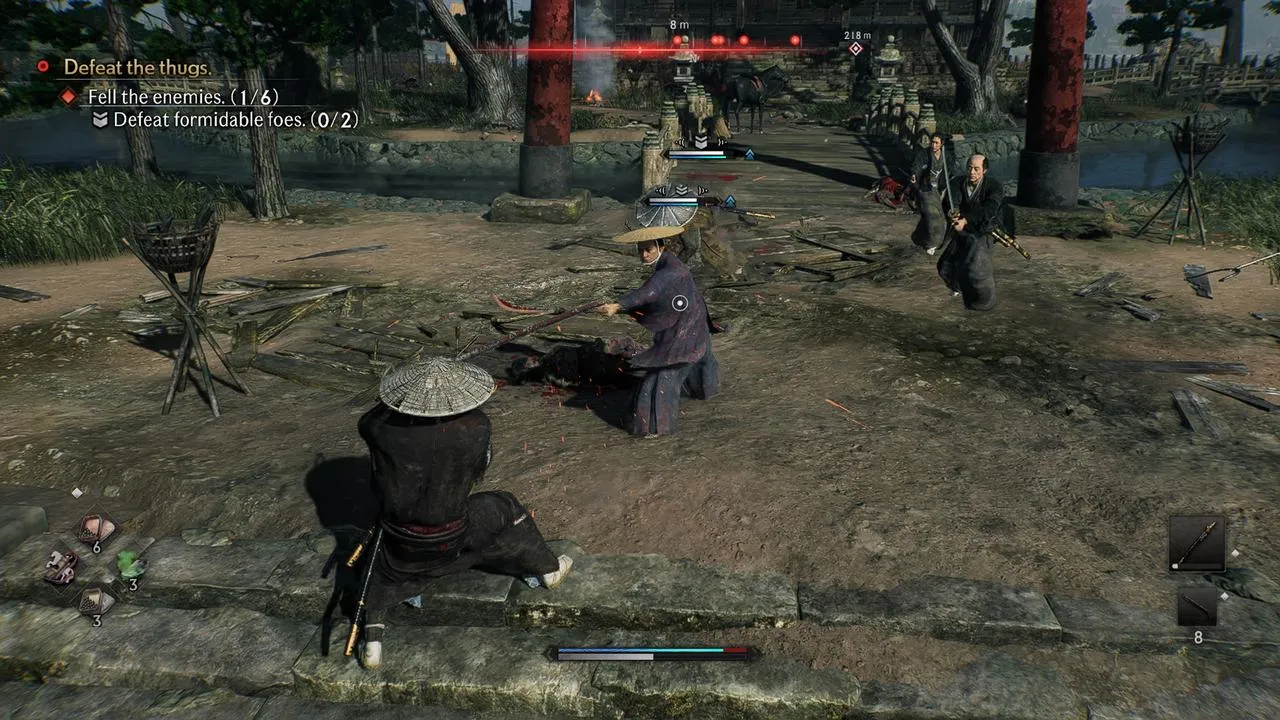 alt text showing combat gameplay, possibly highlighting the variety of weapons. Keywords: Combat, weapons, katana, samurai, Rise of the Ronin
alt text showing combat gameplay, possibly highlighting the variety of weapons. Keywords: Combat, weapons, katana, samurai, Rise of the Ronin
Rise of the Ronin retains the core combat mechanics of previous Team Ninja titles, emphasizing precise parrying, Ki management, and the familiar Ki Pulse system. However, it introduces new elements like a grappling hook, inspired by Spider-Man, allowing players to pull enemies or objects closer for dynamic combat maneuvers. The game boasts a diverse arsenal, ranging from traditional katanas and odachi to Chinese and Western-style blades, each with unique combat styles and special moves. Players can switch seamlessly between melee and ranged weapons, utilizing bows, rifles, and pistols for both offensive and tactical advantages.
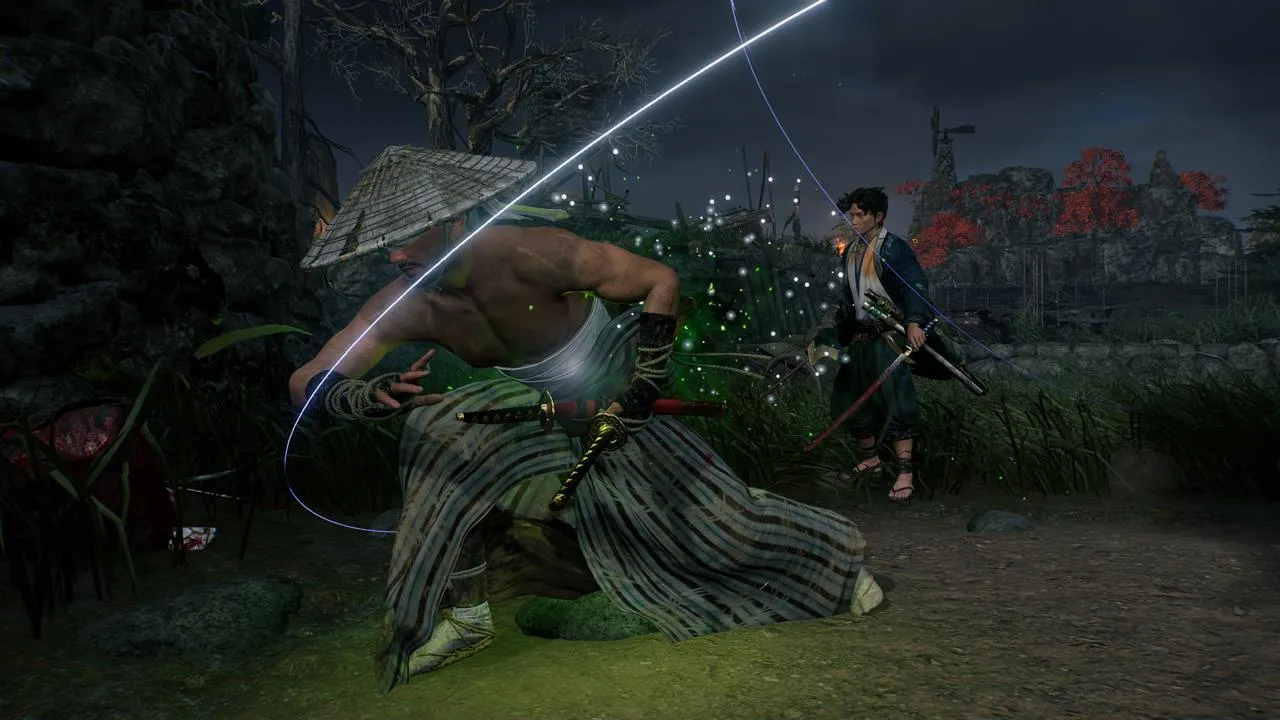 alt text describing the diverse weapon selection and customization options. Keywords: Weapons, customization, armor, gear, Rise of the Ronin
alt text describing the diverse weapon selection and customization options. Keywords: Weapons, customization, armor, gear, Rise of the Ronin
Gear in Rise of the Ronin goes beyond simple rarity tiers. Equipment sets provide passive bonuses, adding strategic depth to gear selection. A transmog system, reminiscent of Diablo, allows for extensive cosmetic customization.
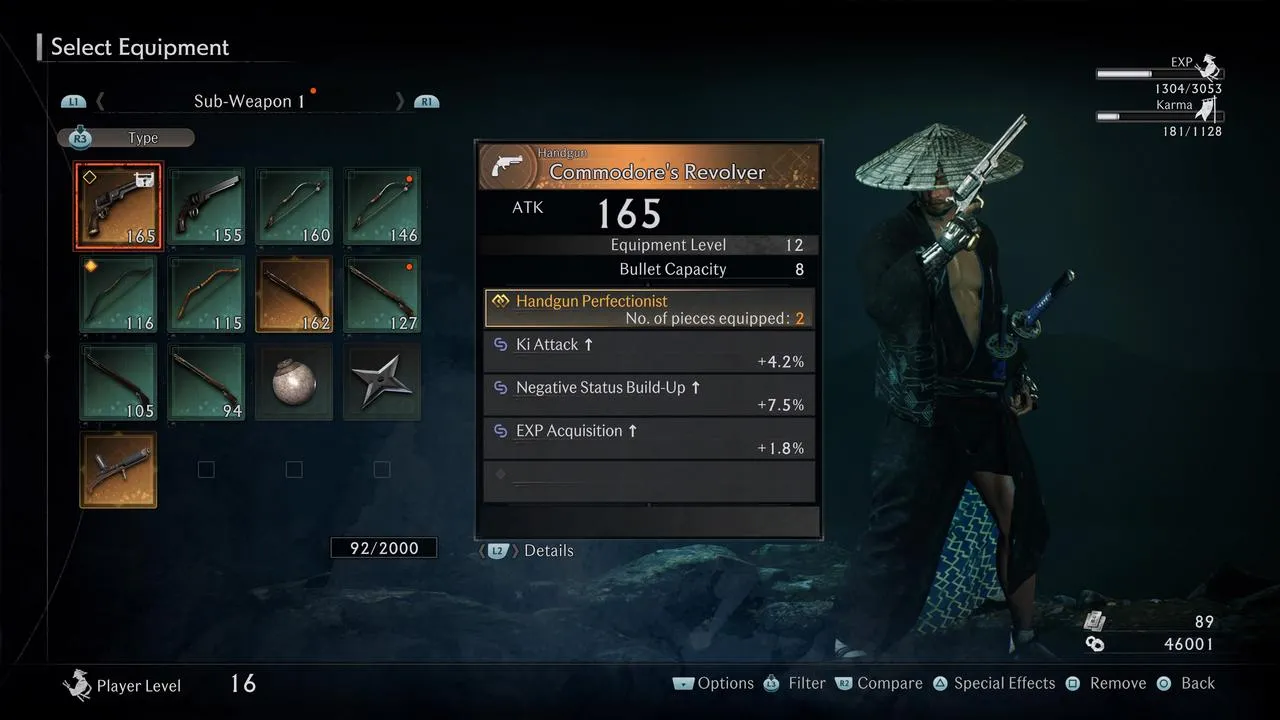 alt text depicting gear or character customization screens. Keywords: Gear, customization, UI, inventory, Rise of the Ronin
alt text depicting gear or character customization screens. Keywords: Gear, customization, UI, inventory, Rise of the Ronin
Addressing the often-criticized difficulty of previous Team Ninja games, Rise of the Ronin offers adjustable difficulty settings and several quality-of-life improvements. The penalty for death is significantly reduced, with only “Karma” points, earned from defeating enemies, being lost upon defeat. The inclusion of AI-controlled or co-op Companions further alleviates the challenge, especially during boss encounters.
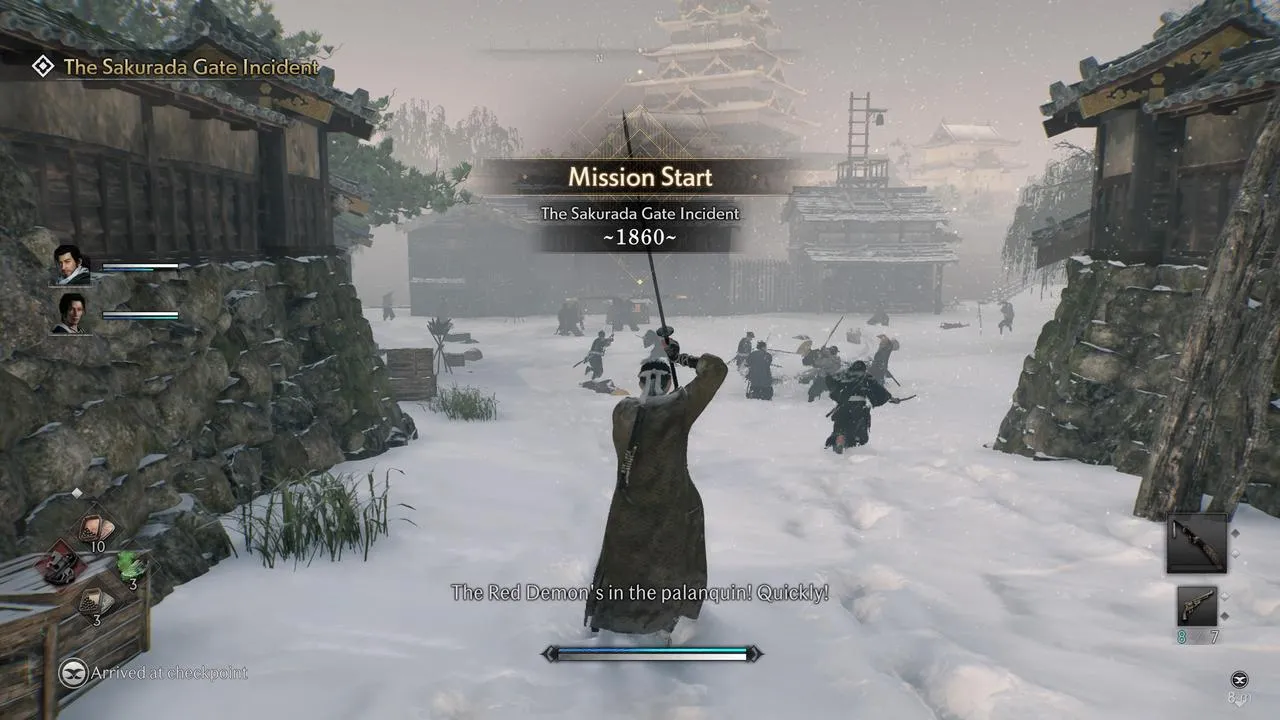 alt text showing combat against a challenging enemy, potentially a boss. Keywords: Boss fight, combat, difficulty, challenge, Rise of the Ronin
alt text showing combat against a challenging enemy, potentially a boss. Keywords: Boss fight, combat, difficulty, challenge, Rise of the Ronin
A Visual Stumble
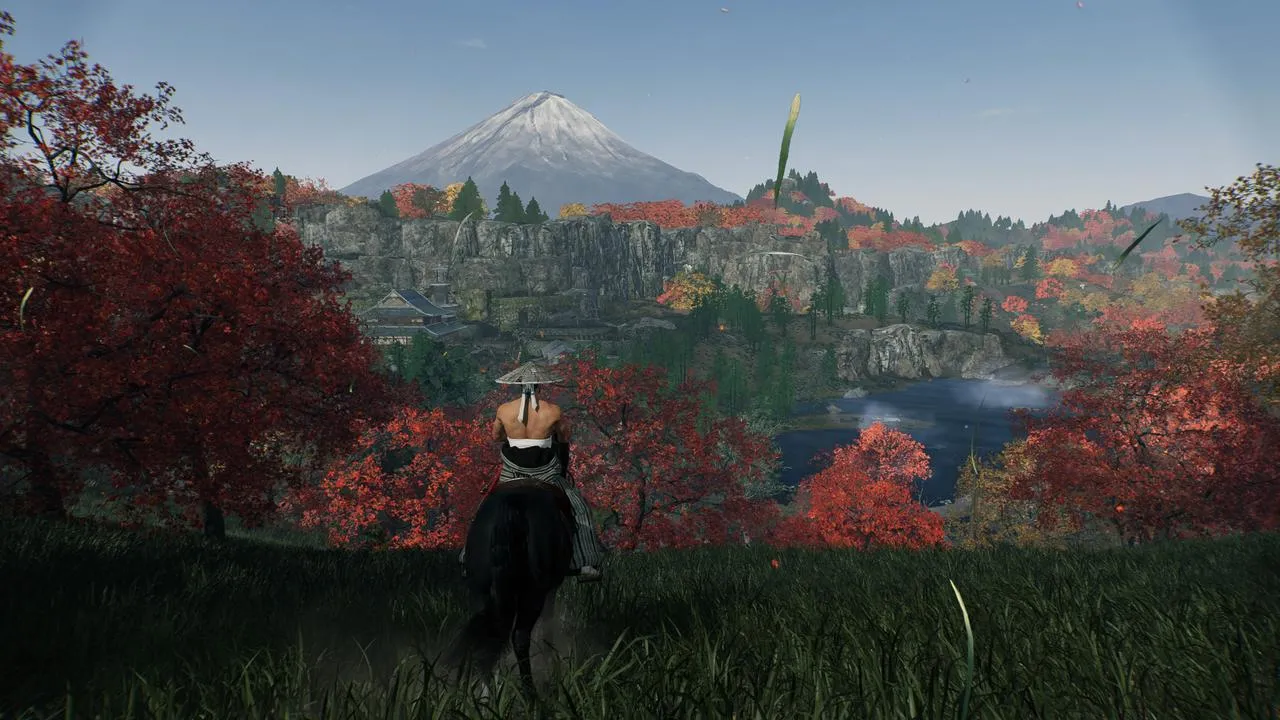 alt text depicting an image showcasing some of the game's environmental details, possibly highlighting the graphical shortcomings mentioned. Keywords: Graphics, environment, visuals, Rise of the Ronin
alt text depicting an image showcasing some of the game's environmental details, possibly highlighting the graphical shortcomings mentioned. Keywords: Graphics, environment, visuals, Rise of the Ronin
Developed initially for the PS4, Rise of the Ronin‘s visuals appear somewhat dated compared to more recent PS5 titles. Visual artifacts, particularly in areas with dense foliage, detract from the overall graphical fidelity. Lighting effects and texture quality are inconsistent, with some outdoor areas appearing reminiscent of PS3-era games. Performance can also be unstable, even in performance-priority mode, with occasional stuttering in larger cities and stiff NPC animations.
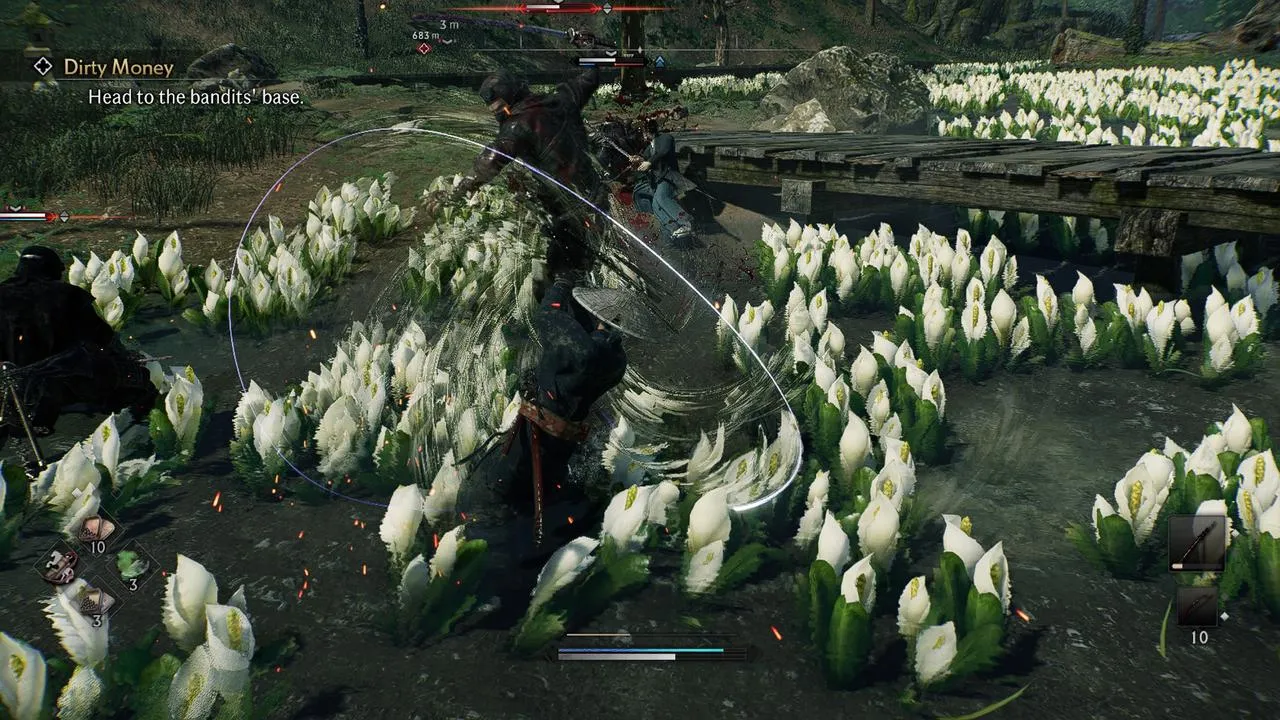 alt text potentially showing a comparison between an in-game environment and a less detailed environment, highlighting the graphical disparity. Keywords: Graphics comparison, PS3 graphics, environment, Rise of the Ronin
alt text potentially showing a comparison between an in-game environment and a less detailed environment, highlighting the graphical disparity. Keywords: Graphics comparison, PS3 graphics, environment, Rise of the Ronin
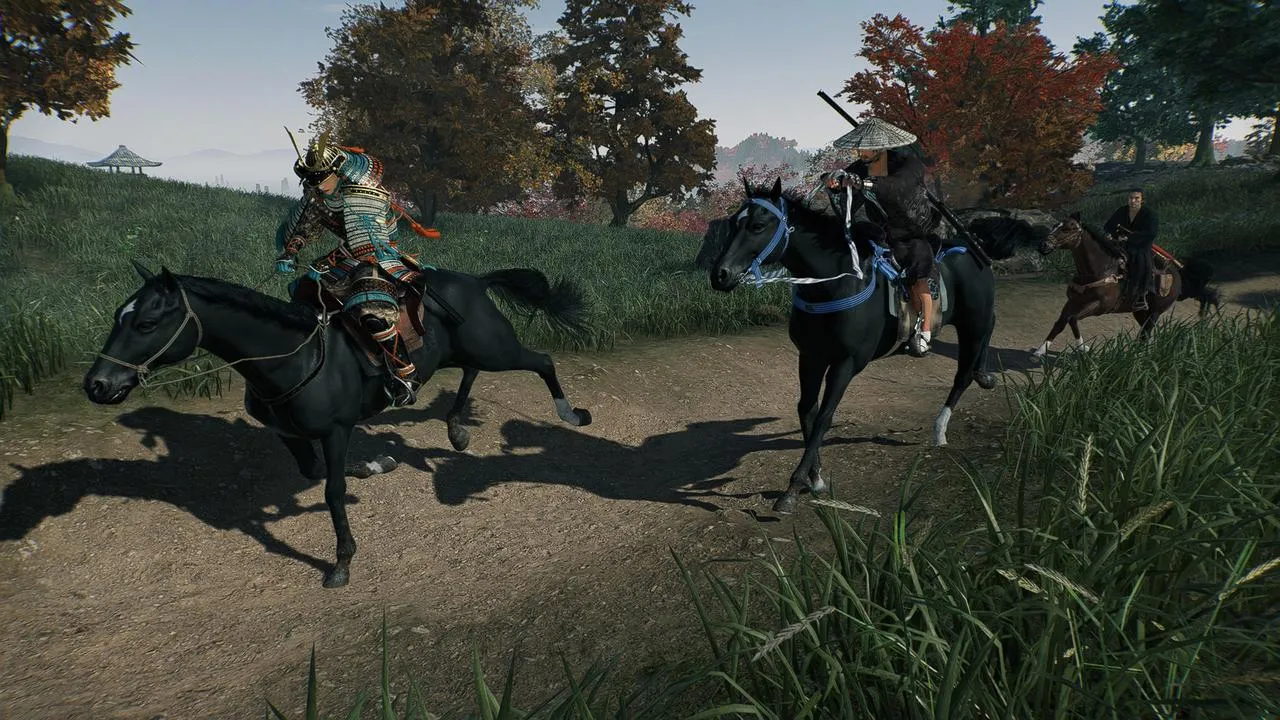 alt text focusing on a scene that highlights the graphical issues with textures or lighting. Keywords: Graphical issues, textures, lighting, environment, Rise of the Ronin
alt text focusing on a scene that highlights the graphical issues with textures or lighting. Keywords: Graphical issues, textures, lighting, environment, Rise of the Ronin
Despite its visual shortcomings, Rise of the Ronin offers a compelling blend of historical narrative, dynamic gameplay, and refined combat. The innovative time-rewind mechanic and flexible faction system add unique depth to the experience. While the graphics may not push the PS5’s boundaries, the core gameplay and engaging story make Rise of the Ronin a worthwhile adventure for fans of action RPGs and samurai epics.





Comments (0)